Fangjiong Chen
Knowledge-Driven Deep Learning Paradigms for Wireless Network Optimization in 6G
Jan 15, 2024



Abstract:In the sixth-generation (6G) networks, newly emerging diversified services of massive users in dynamic network environments are required to be satisfied by multi-dimensional heterogeneous resources. The resulting large-scale complicated network optimization problems are beyond the capability of model-based theoretical methods due to the overwhelming computational complexity and the long processing time. Although with fast online inference and universal approximation ability, data-driven deep learning (DL) heavily relies on abundant training data and lacks interpretability. To address these issues, a new paradigm called knowledge-driven DL has emerged, aiming to integrate proven domain knowledge into the construction of neural networks, thereby exploiting the strengths of both methods. This article provides a systematic review of knowledge-driven DL in wireless networks. Specifically, a holistic framework of knowledge-driven DL in wireless networks is proposed, where knowledge sources, knowledge representation, knowledge integration and knowledge application are forming as a closed loop. Then, a detailed taxonomy of knowledge integration approaches, including knowledge-assisted, knowledge-fused, and knowledge-embedded DL, is presented. Several open issues for future research are also discussed. The insights offered in this article provide a basic principle for the design of network optimization that incorporates communication-specific domain knowledge and DL, facilitating the realization of intelligent 6G networks.
Asynchronous Wireless Federated Learning with Probabilistic Client Selection
Nov 28, 2023



Abstract:Federated learning (FL) is a promising distributed learning framework where distributed clients collaboratively train a machine learning model coordinated by a server. To tackle the stragglers issue in asynchronous FL, we consider that each client keeps local updates and probabilistically transmits the local model to the server at arbitrary times. We first derive the (approximate) expression for the convergence rate based on the probabilistic client selection. Then, an optimization problem is formulated to trade off the convergence rate of asynchronous FL and mobile energy consumption by joint probabilistic client selection and bandwidth allocation. We develop an iterative algorithm to solve the non-convex problem globally optimally. Experiments demonstrate the superiority of the proposed approach compared with the traditional schemes.
Antenna Positioning and Beamforming Design for Movable-Antenna Enabled Multi-user Downlink Communications
Nov 06, 2023Abstract:This paper investigates a multiple input single output (MISO) downlink communication system in which users are equipped with movable antennas (MAs). First, We adopt a field-response based channel model to characterize the downlink channel with respect to MAs' positions. Then, we aim to minimize the total transmit power by jointly optimizing the MAs' positions and beamforming matrix. To solve the resulting non-convex problem, we employ an alternating optimization (AO) algorithm based on penalty method and successive convex approximation (SCA) to obtain a sub-optimal solution. Numerical results demonstrate that the MA-enabled communication system perform better than conventional fixed position antennas.
Performance Analysis of RIS-Aided Double Spatial Scattering Modulation for mmWave MIMO Systems
Oct 08, 2023
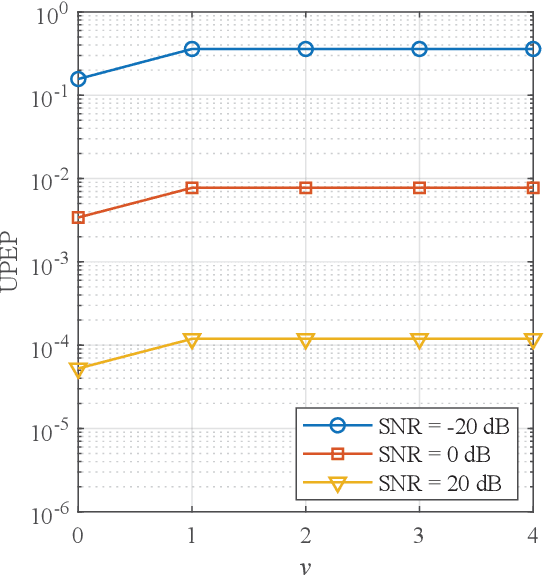
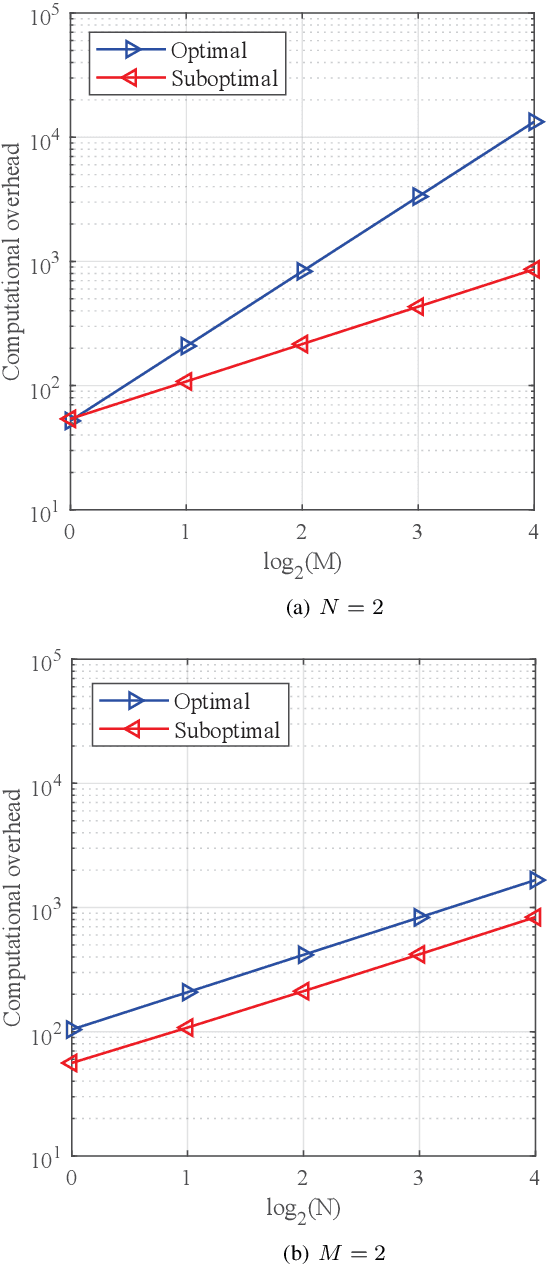

Abstract:In this paper, we investigate a practical structure of reconfigurable intelligent surface (RIS)-based double spatial scattering modulation (DSSM) for millimeter-wave (mmWave) multiple-input multiple-output (MIMO) systems. A suboptimal detector is proposed, in which the beam direction is first demodulated according to the received beam strength, and then the remaining information is demodulated by adopting the maximum likelihood algorithm. Based on the proposed suboptimal detector, we derive the conditional pairwise error probability expression. Further, the exact numerical integral and closed-form expressions of unconditional pairwise error probability (UPEP) are derived via two different approaches. To provide more insights, we derive the upper bound and asymptotic expressions of UPEP. In addition, the diversity gain of the RIS-DSSM scheme was also given. Furthermore, the union upper bound of average bit error probability (ABEP) is obtained by combining the UPEP and the number of error bits. Simulation results are provided to validate the derived upper bound and asymptotic expressions of ABEP. We found an interesting phenomenon that the ABEP performance of the proposed system-based phase shift keying is better than that of the quadrature amplitude modulation. Additionally, the performance advantage of ABEP is more significant with the increase in the number of RIS elements.
Intelligent Reflecting Surface-Aided Spectrum Sensing for Cognitive Radio
Feb 05, 2022
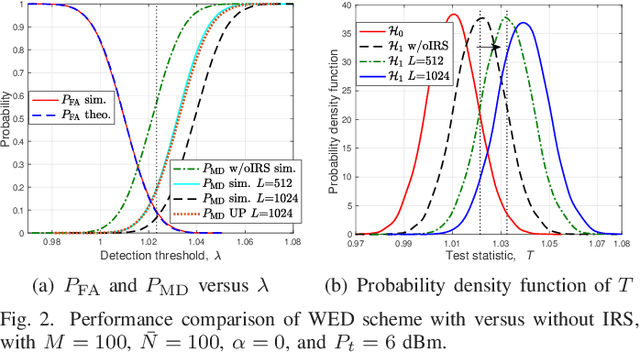
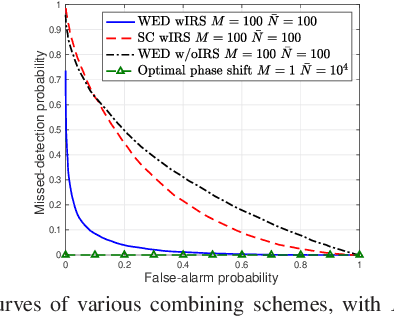
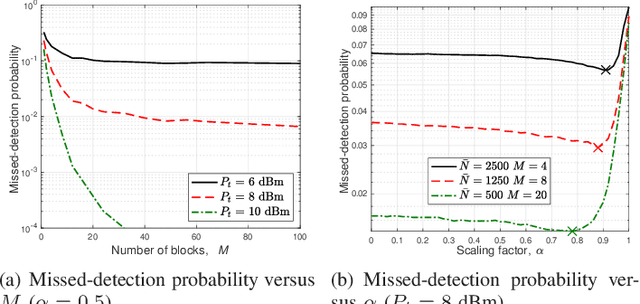
Abstract:Spectrum sensing is a key enabling technique for cognitive radio (CR), which provides essential information on the spectrum availability. However, due to severe wireless channel fading and path loss, the primary user (PU) signals received at the CR or secondary user (SU) can be practically too weak for reliable detection. To tackle this issue, we consider in this letter a new intelligent reflecting surface (IRS)-aided spectrum sensing scheme for CR, by exploiting the large aperture and passive beamforming gains of IRS to boost the PU signal strength received at the SU to facilitate its spectrum sensing. Specifically, by dynamically changing the IRS reflection over time according to a given codebook, its reflected signal power varies substantially at the SU, which is utilized for opportunistic signal detection. Furthermore, we propose a weighted energy detection method by combining the received signal power values over different IRS reflections, which significantly improves the detection performance. Simulation results validate the performance gain of the proposed IRS-aided spectrum sensing scheme, as compared to different benchmark schemes.
* Accepted by IEEE Wireless Communications Letters (5 pages, 4 figures)
Data Sensing and Offloading in Edge Computing Networks: TDMA or NOMA?
Nov 22, 2021



Abstract:With the development of Internet-of-Things (IoT), we witness the explosive growth in the number of devices with sensing, computing, and communication capabilities, along with a large amount of raw data generated at the network edge. Mobile (multi-access) edge computing (MEC), acquiring and processing data at network edge (like base station (BS)) via wireless links, has emerged as a promising technique for real-time applications. In this paper, we consider the scenario that multiple devices sense then offload data to an edge server/BS, and the offloading throughput maximization problems are studied by joint radio-and-computation resource allocation, based on time-division multiple access (TDMA) and non-orthogonal multiple access (NOMA) multiuser computation offloading. Particularly, we take the sequence of TDMA-based multiuser transmission/offloading into account. The studied problems are NP-hard and non-convex. A set of low-complexity algorithms are designed based on decomposition approach and exploration of valuable insights of problems. They are either optimal or can achieve close-to-optimal performance as shown by simulation. The comprehensive simulation results show that the sequence optimized TDMA scheme achieves better throughput performance than the NOMA scheme, while the NOMA scheme is better under the assumptions of time-sharing strategy and the identical sensing capability of the devices.
 Add to Chrome
Add to Chrome Add to Firefox
Add to Firefox Add to Edge
Add to Edge